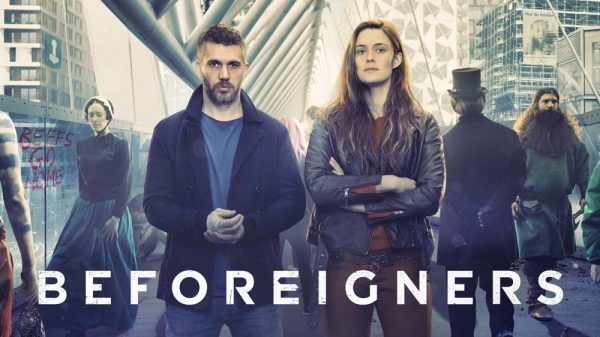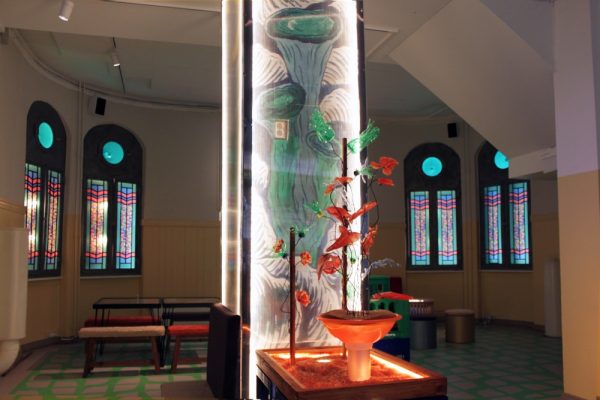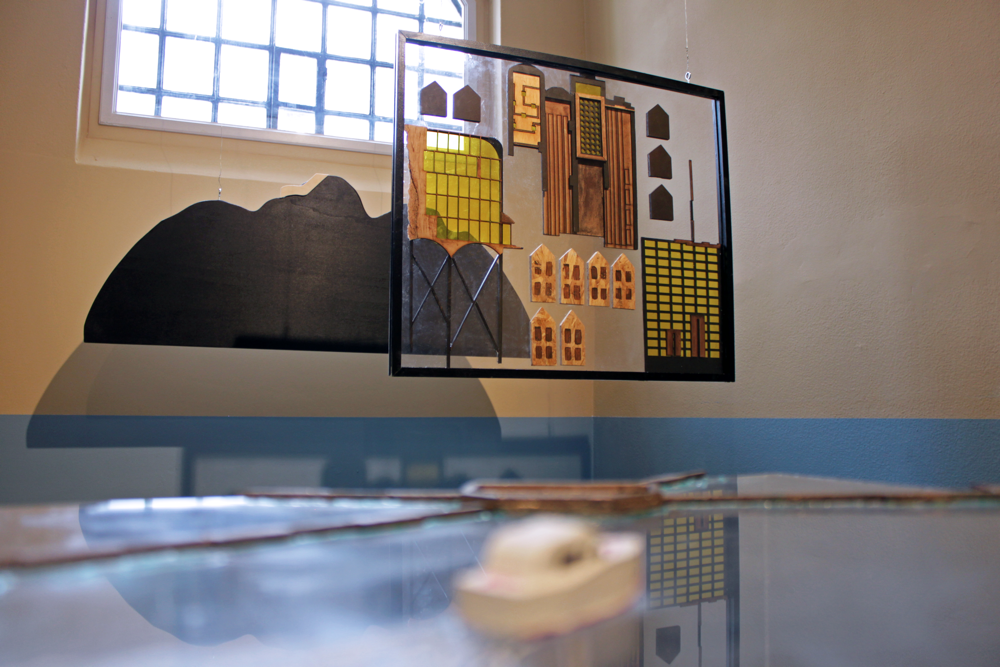Beyond Barcode: Experiments in Radical Futures is a Sci-Fi exhibition on possible futures of Oslo, hosted by the Oslo museum: Interkulturelt Museum in Grønland. The exhibition can serve as an example of how to expand the scope of policy discussions and policy development by involving citizens and stakeholders in creative processes that help all participants free themselves from limiting prejudices and institutional lock-ins. The current crises clearly require new ways of thinking and doing.
Bodhisattva Chattopadhyay, Assosciate Professor, University of Oslo
Bergsveinn Þórsson, Associate Professor, Bifröst University, Iceland
The Future in Policy Learning and Policy Development
The urgency to think outside the box, change and transform the way societies are organized and managed is repeatedly stated in documents from the Paris Agreement, Agenda 2030 to the Climate and Energy strategy for Oslo. From green to energy transitions, the talk of change is quite prevalent.
Despite the talks, scientific findings, reports and documents, the global effort to halt greenhouse gas emissions is going nowhere. The 2023 special report on Agenda 2030 states that most of the measurable progress since the Sustainable Development Goals inception has either regressed or halted. While the report states that the Agenda 2030 remains the “clearest blueprint of humanity’s highest aspirations” and one that is supposed to steer global communities away from polycrisis, the progress is slow, and even slowing down.
Could this be seen as a problem of method? What are the methods of creating these documents, could there be a fault in the way they are put together that leads to issues of implementation? The Sustainable Development Goals have clear overarching values, goals, targets and indicators to guide the process, but how is a sustainable future envisioned? What does it look like, from Jakarta to Oslo?

and design: Anas Salameh and Suzan Serdashti. Photo: Katarina Caspersen.
The dominant strategies for future thinking, the ones that shape the language and methods of policy documents, tend to highlight metrics and measurable elements guiding the construction of goals and visions. Public policy is increasingly transformed by business-oriented management theories through the lenses of efficiency and costbenefit analysis. Who can be against efficiency in social organization?
Leveraging costs and benefits of actions is not necessarily a bad thing, but somehow it seems to bury us even deeper in the status-quo instead of leading the sought after social, economic and environmental transformation. One of the main reasons is that these approaches are based on thinking, methods and practices developed in the past, created to address the problems of the past. By using the future – while being inspired by science, art and the life experience of citizens and stakeholders – we can create a bigger space for reflection, discussion and action.
Experiments in Radical Futures
Beyond Barcode: Experiments in Radical Futures is a Sci-Fi exhibition on possible futures of Oslo, hosted by the Oslo museum: Interkulturelt Museum in Grønland. It is a collaboration between the CoFutures group at the University of Oslo1, and the Interkulturelt Museum (Oslo Museum).
The exhibition was put together by the curatorial team of Bergsveinn Þórsson, Anders Bettum, Annelise Bothner-By, and Bodhisattva Chattopadhyay. The exhibition comprises seven primary scenarios, designed by youth in the Gamle Oslo and Tøyen area, and developed into artistic works in association with local Oslo artists, and backed by climate and political research on Norway in general and the Oslo region in particular.
The exhibition shows a variety of entangled possible futures, with each scenario taking us to a different year for Oslo – the nearest one being 2050, and the furthest taking us to 2222. There are both optimistic and pessimistic scenarios in this mix, as well as mixed scenarios that are neither utopian nor dystopian. The scenarios might seem eerily familiar to anyone working on scenarios as policy method, as well as to all scifi buffs: there are underwater hotels, cloud cities, advanced AIs, and even developments in Norwegian language in the future.

The title of the exhibition, Beyond Barcode, takes its inspiration from urban planning and new city developments in the “Barcode” in Oslo – primarily looking at what such new developments mean for residents who live in its shadows, and how they imagine possible futures beyond it.
As researchers in CoFutures, we explore how different people around the world imagine futures, and how these future imaginaries can inform and influence the present. We created Beyond Barcode to study imaginaries and futuring strategies in practice, as a laboratory for methods development and testing.
Since the Barcode area is marketed and presented as a futuristic site and the focal point for a new national image, we wanted to see whether people were imagining – or could imagine – alternative possible futures that deviated from the mainstream, and whether these new imaginaries could help us understand or shape the hopes and the fears of the present as much as the possibilities, excitement, and the anxieties of the future.
The Methodology and Process
The participants in the exhibition project attended scenario-building workshops where the ideas of each scenario were sketched out. Each workshop had a particular theme that guided the participants, the aim was to encourage re-prioritization of potential futures where issues such as social life, diversity, demographic, climatic and technological change were highlighted.
In addition, the participants were urged to explore diverse possibilities and think locally in the near-present. However, the participants had quite a lot of freedom to shape their own scenarios as they wanted, and they were encouraged to be imaginative.
The scenario development work was done over three years, with trial workshops with artists and experiments designed in the first year, a series of workshops with community participants in the second year, and further developments and exhibition making in the final year.
Bringing the scenarios into the exhibition space required further development in collaboration with artists and designers. Each scenario had its own creative process where the initial participants were joined with creatives, the curatorial team and other experts in translating these mostly descriptive scenarios into the exhibition space.
Multidisciplinary Scenario Building
The primary issues, of climate change and demographic change, served as the focus for the various scenarios, and hyperobjects were scaled down to the level of human impact.
For instance, for two scenarios: “Havria” (2092 AD) and “Chilleplassen” (2222 AD), sea level rise in the Oslo fjord was taken into account, looking both at existing climate models and scenarios from Cicero, Norsk klimaservicesenter, the Meteorologisk Institutt, and Klimaetaten, as well as different models found in global science fiction, including climate fiction about drowned and underwater cities, resilience narratives in the face of catastrophes etc. These were also supplemented with common media reports such as NRK’s “Jakten på klimaendringene” (2019).
Climate was undoubtedly the top concern among the participants, and their ideas about the future bore heavy traces of common media reports rather than scholarly studies or IPCC scenarios. Scifi gave them the creative play space to work out possibilities of alternative futures, both as individuals and as communities, especially in the face of the overwhelming dystopia promoted by media reports or scenarios.
The playfulness of scifi was integral in opening up alternatives: not just environmental, but also political and economic alternatives. For instance, the world class facilities of Havria, the underwater hotel, became a commons, where anyone irrespective of economic status was welcome. It also provoked alternative thinking around food and sustainability, for instance, whether fishing in the fjord was sustainable, the impact of pollution, seaweed as a possible source of nutrition etc.
Throughout the design process, as the participants were working with human and community level change, climate change was often seen to exacerbate societal problems, and mitigating these problems became a focal point for discussion among the participants. Thus participants had to constantly look beyond the surface of issues to underlying structural and infrastructural problems driving both climate change and social problems.

In order to engage in worldbuilding, the workshop participants thus teased out or devised alternative economies, alternate political systems, and – in the case of the scenario “Essence of Grønland”, a future Norwegian language (“Nynynorsk”), challenging the alarmist discourse about “Kebab Norsk’’ via the introduction of new glyphs representing new sounds in the Norwegian language of the future.
Once again, scifi served as inspiration, from classic scifi exploring future language developments such as Russell Hoban’s Riddley Walker (1974), but also including Norwegian scifi such as Beforeigners (2019). For this scenario, in particular, we also worked with linguist Samantha Goodchild with expertise in language evolution from the Senter for flerspråklighet at the university, who helped think with sociolects as well as possible future directions of Norwegian language.
In all the scenarios, the focus was not only on scifi futures, but to ground these imaginaries in concrete, multidisciplinary research, and each of the scenarios reflects this character.
The goal for us with Beyond Barcode was to activate the imagination: using data from multiple sources, together with scifi and guided by CoFutures’ ethical framework as guides to unwrap and present total systemic changes. Thus the scenarios work both individually in isolation, but better together as an entangled cluster of possibilities.
Policy, Speculation, and Futures
Beyond Barcode mixed together creatives, researchers, and youth groups to explore possible futures, and at the same time criticizing how planning seems to be dragging everyone in the same direction.
In the exhibition scenario “Lokkuppet”, a radical change takes place in the center of Oslo revolving around a single event, the local inhabitants take over a “platform” built on top of Oslo Sentralstasjon for the development of a shopping mall. The takeover transforms the site into a locally and collaboratively built neighborhood planting the seeds for an organically developed society.
What is of note for the “Lokkuppet” is the continued development of the area, while initially the place took the shape of a “free state” where people traded for goods, helped each other and managed their own economy, the creators behind the scenario questioned the stability of such a fragile ecosystem. Where does it lead to? Will the societal value of the area eventually lead to financial and property value changing the dynamics of Lokket? The core values, how they are preserved or change is left openended, but the reflection on complex, interconnected drivers of change makes societal change look refreshingly messy.
Another example is the “Beyond Tøyen” scenario. On first look, the tall skyscrapers of transformed Tøyen seem overfamiliar in relation to the way cities of the future are imagined. Indeed, scifi is replete with images of future cities, which have also influenced architects, governments, and foresight teams to look to them for inspiration.

Research and Innovation Policy
At the core of the exhibition design and process is multidirectional transfer of knowledge.
The overall exhibition is also a platform for dissemination of futures knowledge, as well as research and policy choices. The exhibition offers a direct template for how community participants may themselves engage – and be brought in to engage – in civic futures design and innovation process influenced by policy and research.
Furthermore, the exhibition experience is gamified, and features two sets of questions: simpler “game” questions based on the prototypes that allow the exhibition audience to engage with the different prototypes from another angle, as well as longer, “challenge questions” that allow the exhibition audience to participate in the core enquiries, problems, and objectives behind the prototype future on display, as well as the research including data behind the prototypes.
The challenge questions are thus also meant for policy makers as much as community, to both learn from and explore the prototypes as not mere imaginary ideas, but as guidemaps for potential, possible, and preferable futures.
The prototypes, the exercises and activities can thus be seen as potentially useful tools for policy learning and policy dissemination, increasing community participation in civic processes, and making innovation and policy issues directly visible and debatable within a public space.
They are also, and just as importantly, experimental spaces that can inform policy development using community speculations, including community hopes, needs, anxieties, and fears of the future, as starting points for designing better and more resilient social systems. Our methods for Beyond Barcode answer a key need within research and policy spaces: the need for research practices that balance dissemination and action, policy and impact.
Further Goals and Strategies
Beyond Barcode serves as a template for how museums and cultural spaces can be key partners in both scenario and policy work, especially those involving community stakeholders. While museums often serve as repositories of the past, including heritage, their role in shaping communities, especially through processes of curation and storytelling, is a specific competence with significant possibilities for thinking about possible futures as well.
Exhibitions as sites of future making thus serve a triple function for museums and similar public spaces. Future making first and foremost engages the community – both decision makers and those affect by decisions – becoming a space for community empowerment and community transformation through self-definition (how do we imagine ourselves in the future) rather than externally curated self-perception (this is who we were and will be).
Second, exhibitions such as Beyond Barcode become a space for regulating the intersecting flows of community desires and community anxieties, with different scenarios serving as a barometer for the suitability or effects of specific policies – as well as understanding what kind of imaginaries people live by.
Third, they also make it possible to think and design alternatives within a managed, and reflected context, channeling multidisciplinary insight through the lens of the imagination.
For a full list of participants and contributors to the project see the exhibition’s webpage: http://exhibition.cofutures.org
1 CoFUTURES is an international group working on Global Futures with its sphere of activities scattered across various communities, research groups and networks around the world. https://cofutures.org/
References
- NRK.no, “Jakten på klimaendringene”. https://www.nrk.no/jakten-pa-klimaendringene-1.14375177
- Chattopadhyay, Bodhisattva. “Manifestos of Futurisms.” Foundation: The International Review of Science Fiction No.139, vol.50, No.2 (Summer 2021), pp. 8-23.
- Þórsson, Bergsveinn. (2020). “Walking through the Anthropocene: Encountering materialisations of the geological epoch in an exhibition space”. Nordisk Museologi, 28(1), pp. 103-119.
Top photo of Chilleplassen scenario installation. Design Katarina Caspersen. Photo Katarina Caspersen

